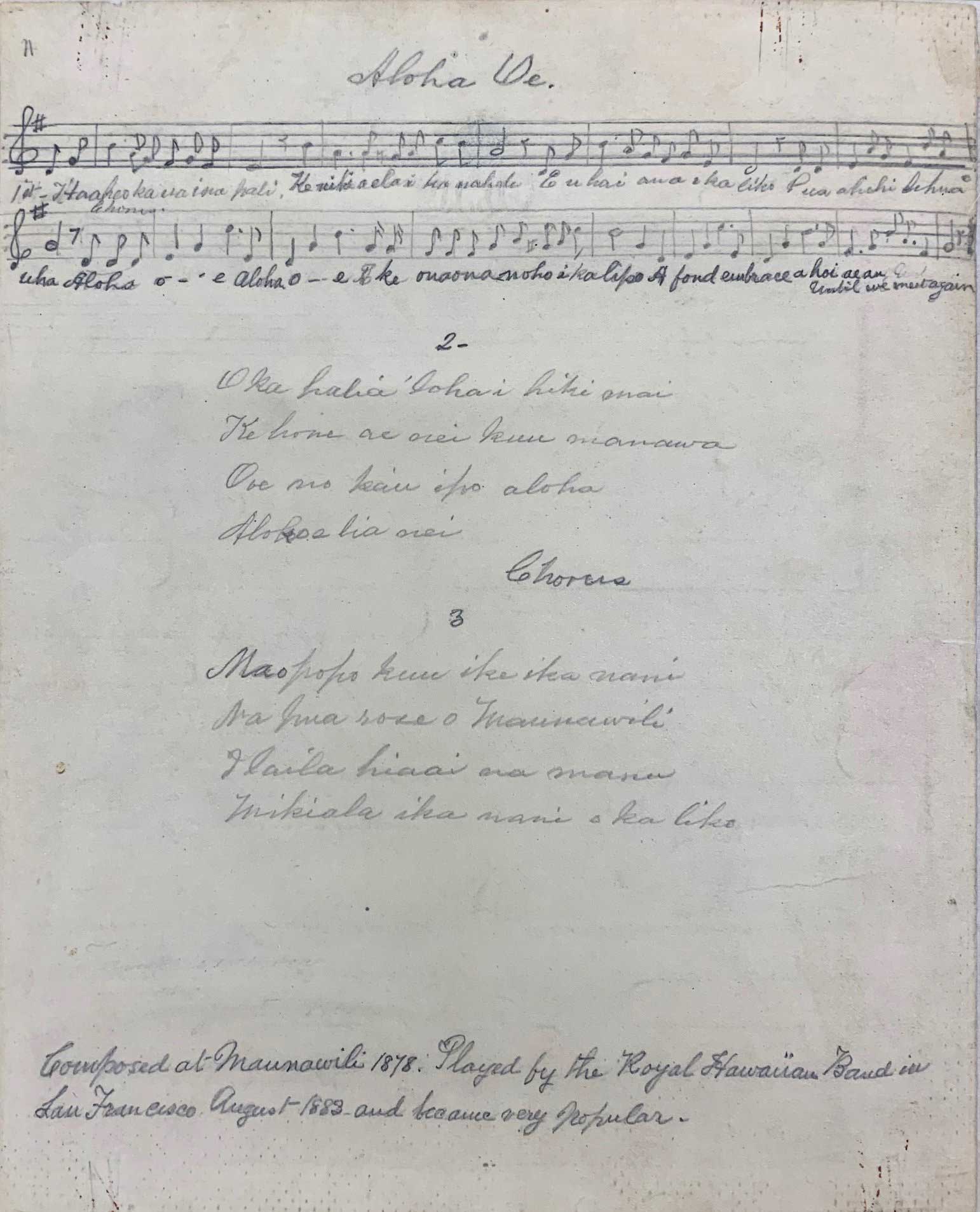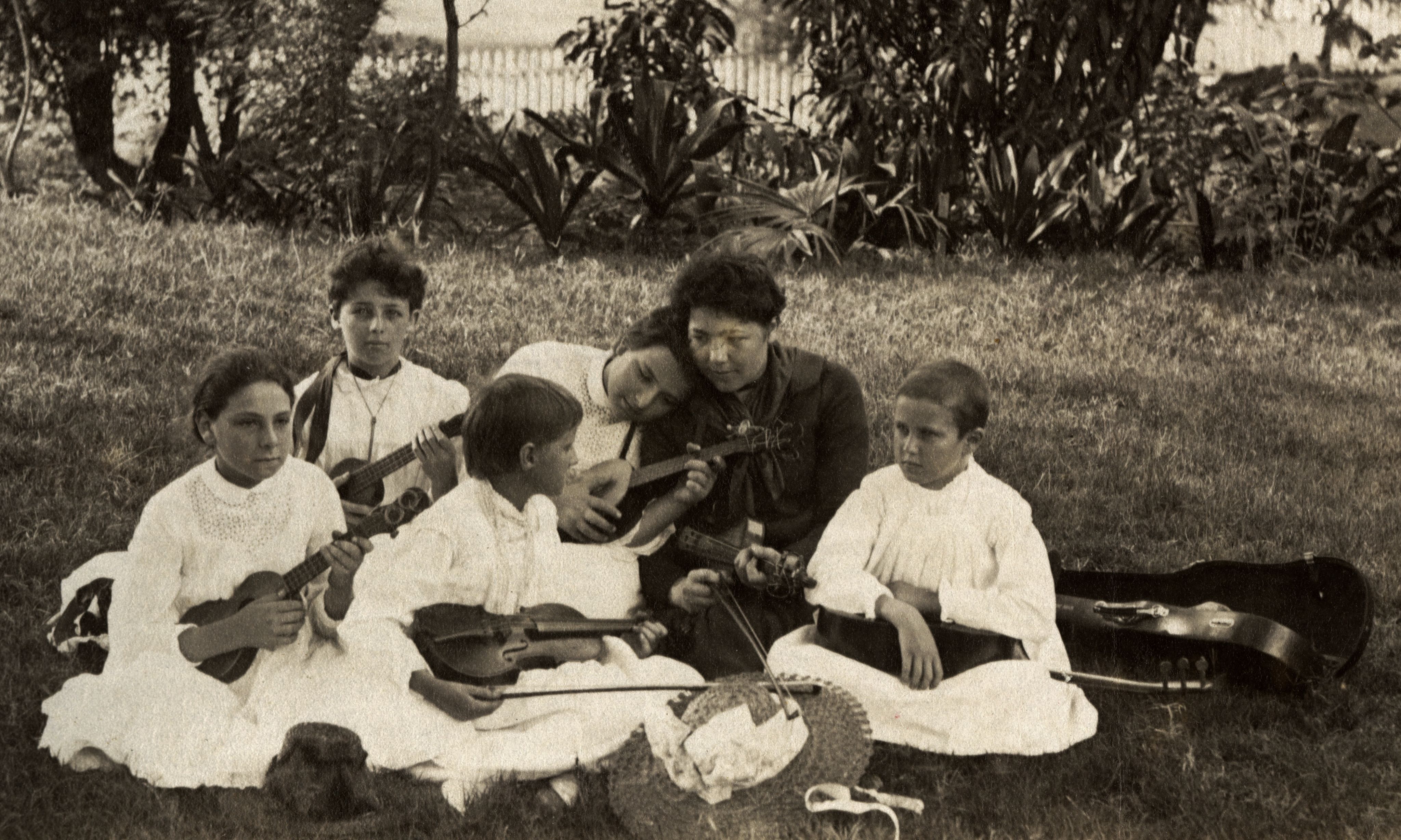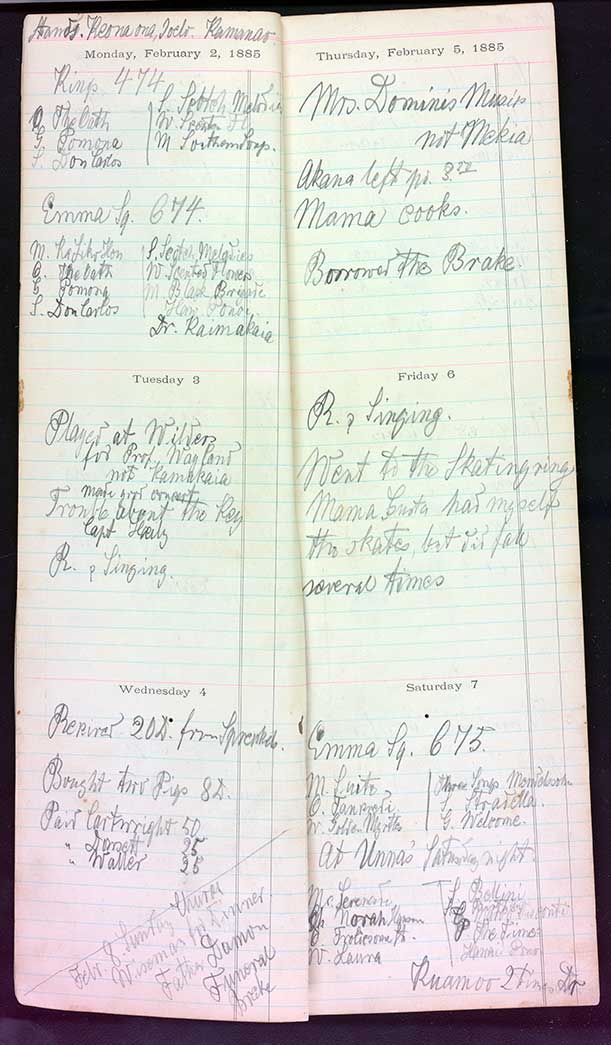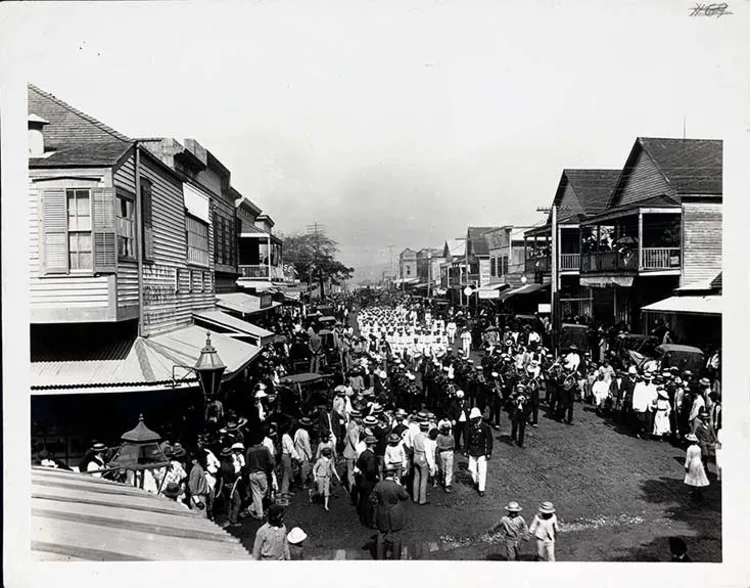1880s
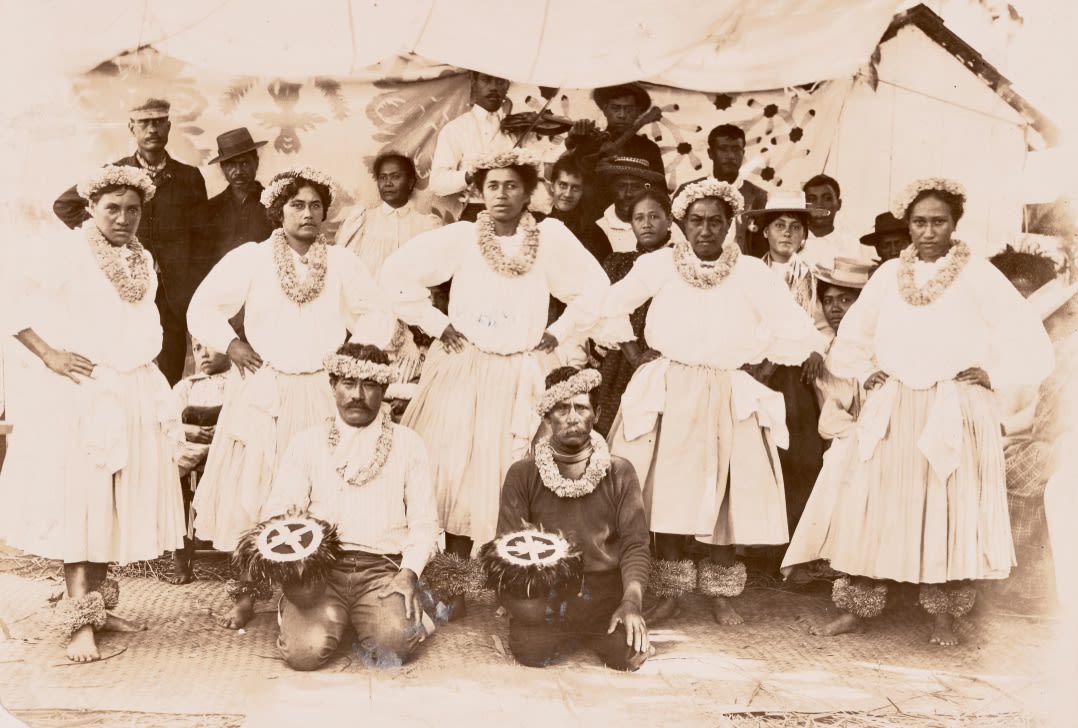
1880s Under the patronage of HRH Mōʻī Kalākaua, stringed instruments become common in accompanying the hula kuʻi, a new style incorporating western dance movements.
1880 The Honolulu Opera house is built across the street from ʻIolani Palace. Some shows debut in Honolulu before San Francisco or New York City.
1882 15 year old Mekia Kealakai joins RHB playing trombone.
1883 The Royal Hawaiian Band competes in the Triennial Conclave of the Knights Templar Brass Band Contest in San Francisco and wins first place out of leading bands from across the United States. Mekia Kealakai and David Nape attend, both only in their early teens.
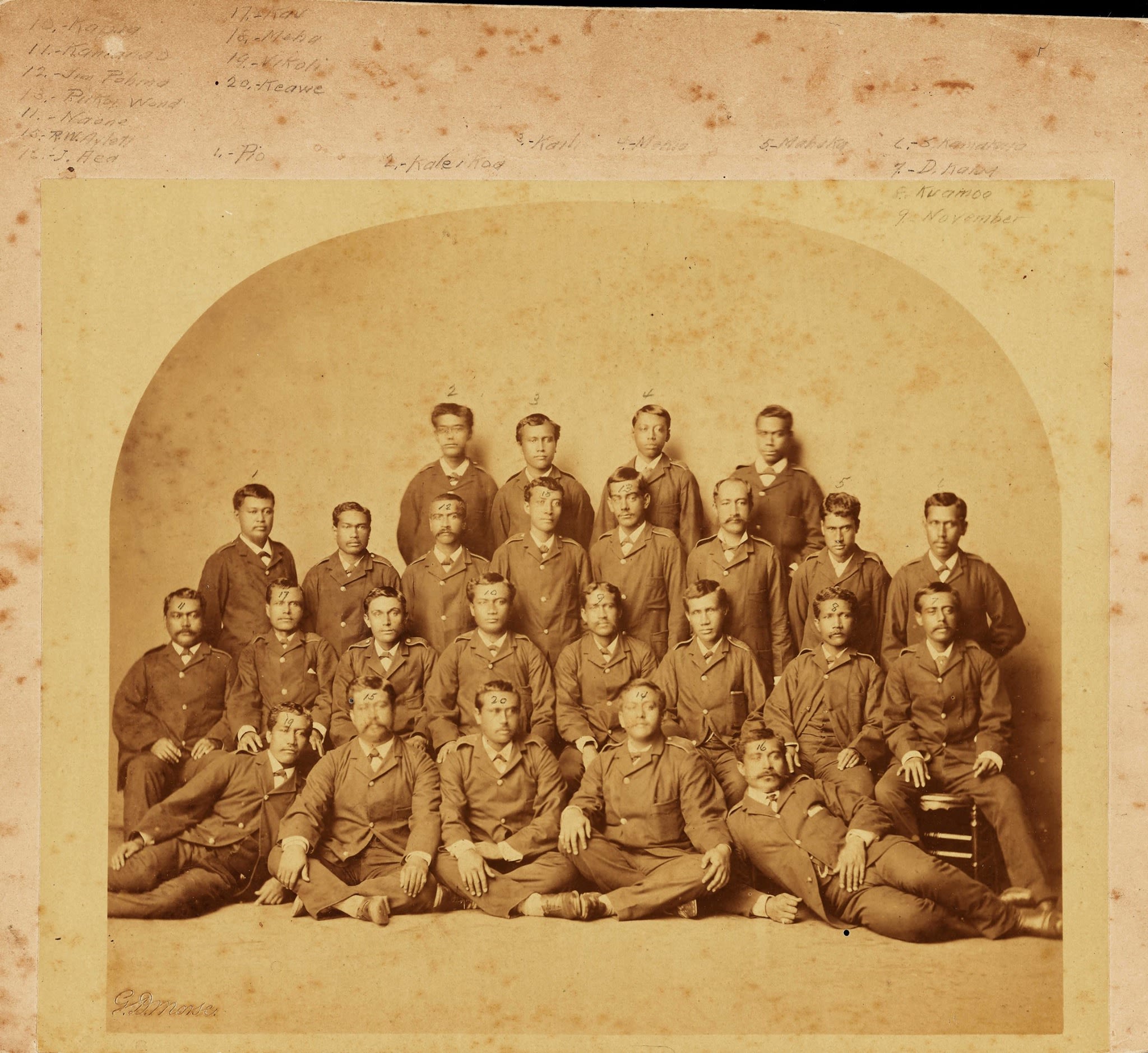
The Royal Hawaiian Band photographed in San Francisco, August 1883. Courtesy Hawaiʻi State Archives.
The Royal Hawaiian Band photographed in San Francisco, August 1883. Courtesy Hawaiʻi State Archives.
“Aloha ʻOe” as played by the Royal Hawaiian Band debuts in the United States during the Triennial Conclave of the Knights Templar Brass Band Contest held in San Francisco California.
1884 Jerome Thibouville-lamy builds a guitar which is eventually owned by King Kalakaua.
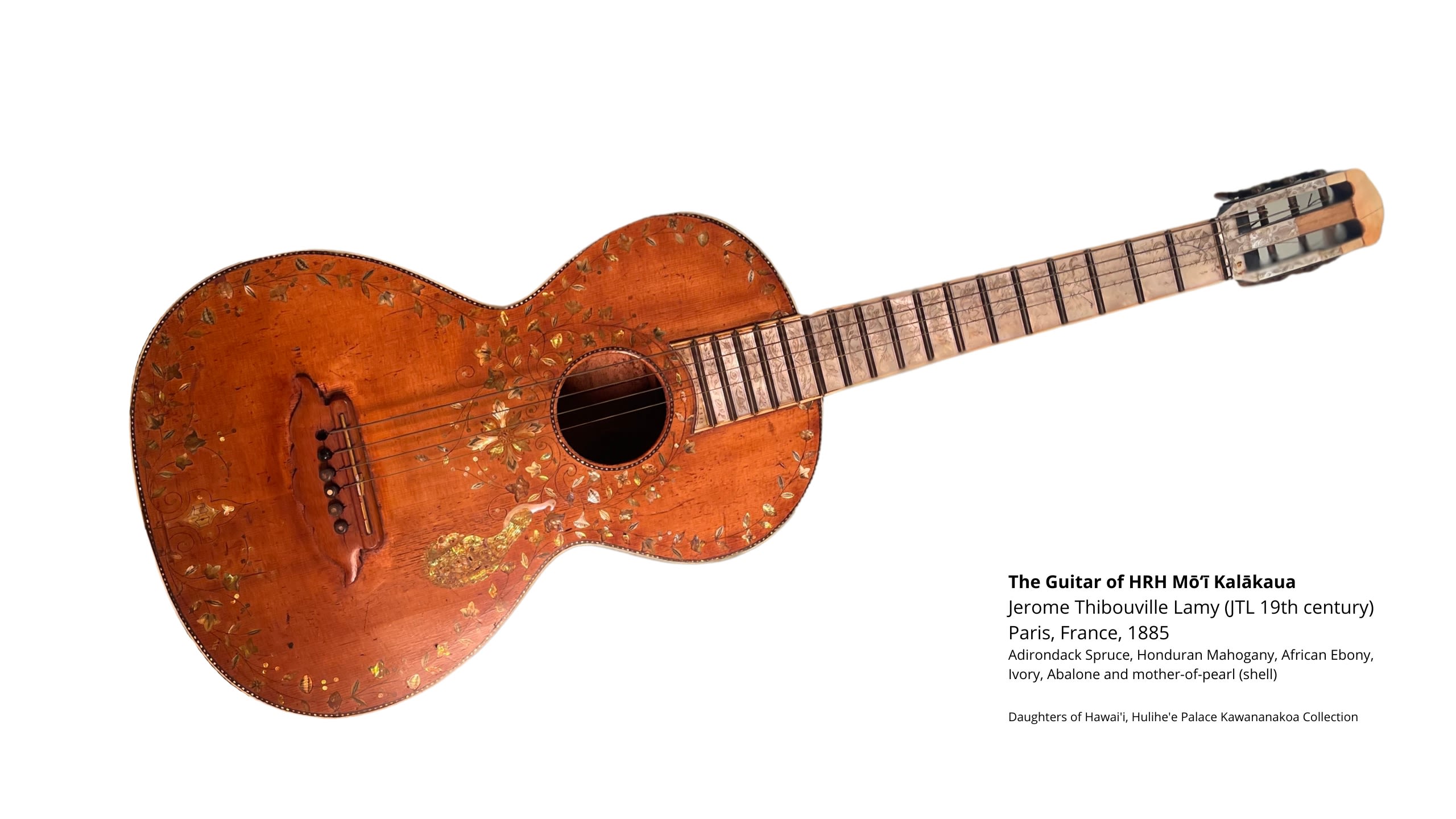
Guitar of HRH Mōʻī Kalākaua, built in Paris France, 1885 by Jerome Thibouville Lamy. Courtesy Huliheʻe Palace.
Guitar of HRH Mōʻī Kalākaua, built in Paris France, 1885 by Jerome Thibouville Lamy. Courtesy Huliheʻe Palace.
1885-1889 Joseph Kekuku invents the acoustic Hawaiian Steel Guitar style.
1888 The first printed collection of Hawaiian-language musical compositions, “Ka Buke o na Leo Mele Hawaii”, appears in Honolulu.
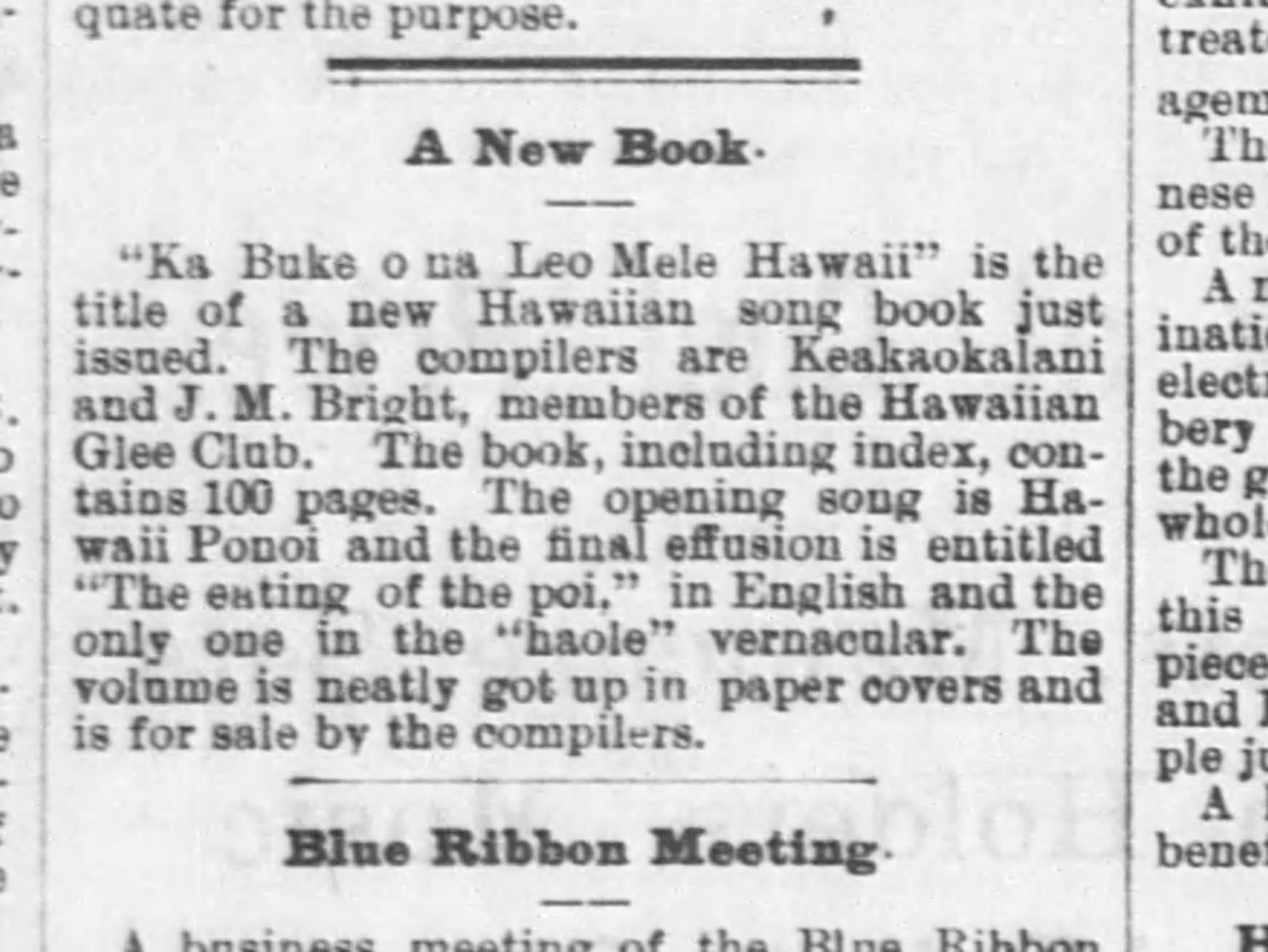
Announcement of the release of Ka Buke o na Leo Mele Hawaii. The Hawaiian Gazette, Tuesday Jan 17 1888.
Announcement of the release of Ka Buke o na Leo Mele Hawaii. The Hawaiian Gazette, Tuesday Jan 17 1888.
